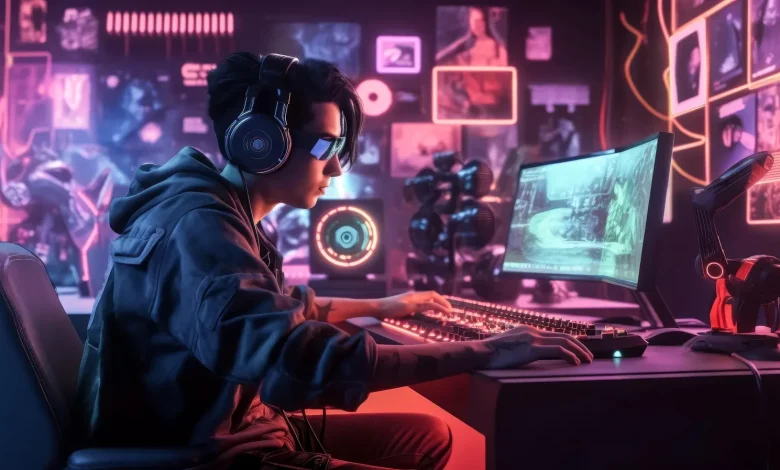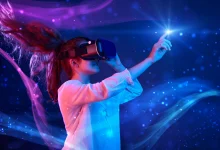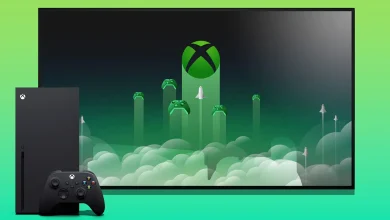The 3D Revolution and Multimedia Convergence: Shaping the Future of Gaming and Entertainment
The 3D Revolution and Multimedia Convergence

Introduction:
The 3D revolution and multimedia convergence represent a transformative period in the history of gaming and entertainment. This era, which emerged in the late 20th century, saw a convergence of technologies and creative innovations that forever changed the way we interacted with digital media. From the introduction of 3D graphics to the integration of multimedia elements, this article explores how these developments revolutionized gaming and paved the way for new forms of immersive entertainment.
The Emergence of 3D Graphics:
The 3D revolution in gaming can be traced back to the late 1980s and early 1990s when advancements in computer hardware and software enabled developers to create more immersive and visually stunning gaming experiences. Games like “Wolfenstein 3D” and “Doom” pioneered the use of 3D graphics, allowing players to navigate three-dimensional environments and engage in fast-paced, first-person shooter gameplay. These titles set new standards for graphical fidelity and gameplay, laying the groundwork for the 3D gaming experiences that would follow.
The Rise of Multimedia Convergence:
Simultaneously, the late 1980s and early 1990s saw a convergence of multimedia technologies, with gaming platforms incorporating elements like CD-ROMs, full-motion video, and digital audio to enhance the gaming experience. This convergence enabled developers to tell richer and more immersive stories, incorporating cinematic cutscenes, voice acting, and orchestral soundtracks into their games. Titles like “Final Fantasy VII” and “The Legend of Zelda: Ocarina of Time” showcased the potential of multimedia convergence to elevate storytelling and immersion in gaming.
Technological Advancements:
The 3D revolution and multimedia convergence were made possible by significant advancements in technology. The introduction of 3D graphics accelerators, such as the 3dfx Voodoo and Nvidia GeForce series, enabled real-time rendering of complex 3D environments and special effects. Meanwhile, the adoption of CD-ROM technology and digital audio standards like Red Book audio allowed games to incorporate high-quality music, voice acting, and sound effects. These technological advancements pushed the boundaries of what was possible in gaming, paving the way for new forms of interactive entertainment.
Impact on Gaming and Entertainment:
The 3D revolution and multimedia convergence had a profound impact on gaming and entertainment, shaping the future of the industry in numerous ways. 3D graphics revolutionized game design, enabling developers to create more immersive and realistic worlds for players to explore. Multimedia convergence elevated storytelling in games, blurring the lines between interactive and cinematic experiences. The rise of multimedia convergence also influenced other forms of entertainment, including film, television, and music, as creators embraced digital technology to enhance their storytelling and production values.
Legacy and Future Trends:
The legacy of the 3D revolution and multimedia convergence continues to shape the gaming and entertainment landscape today. Modern gaming platforms, such as consoles, PCs, and mobile devices, leverage advanced 3D graphics technology to deliver breathtaking visual experiences to players. Meanwhile, multimedia convergence remains a driving force behind the integration of interactive storytelling and cinematic experiences in gaming. Looking ahead, emerging technologies like virtual reality (VR) and augmented reality (AR) promise to further push the boundaries of immersion and interactivity in gaming, building upon the foundation laid by the 3D revolution and multimedia convergence.
Conclusion:
The 3D revolution and multimedia convergence represent a pivotal moment in the history of gaming and entertainment, transforming the way we interact with digital media and shaping the future of the industry. From the introduction of 3D graphics to the integration of multimedia elements, these developments have revolutionized gaming, elevating storytelling, immersion, and interactivity to new heights. As technology continues to evolve, the legacy of the 3D revolution and multimedia convergence will continue to inspire and drive innovation in gaming and entertainment for years to come.
Impact on Gaming and Entertainment: Shaping Culture, Technology, and Society
Introduction:
The impact of gaming and entertainment extends far beyond mere leisure activities; it influences culture, technology, and society at large. From the early days of arcade cabinets to the immersive virtual worlds of modern gaming, interactive entertainment has become an integral part of our lives. This article delves into the multifaceted impact of gaming and entertainment, exploring how it shapes our world in diverse ways.
Cultural Influence:
Gaming and entertainment have left an indelible mark on popular culture, shaping the way we consume media, express ourselves, and engage with technology. Iconic characters like Mario, Lara Croft, and Master Chief have become cultural icons, transcending the confines of gaming to become recognizable symbols in mainstream culture. The influence of gaming is evident in film, television, music, and fashion, with references to video game culture permeating various aspects of popular culture.
Social Interaction:
One of the most significant impacts of gaming and entertainment is its role in fostering social interaction and community building. Online multiplayer games, social media platforms, and streaming services have transformed gaming into a social experience, connecting players from around the world in virtual communities. From cooperative gameplay to competitive esports tournaments, gaming has become a platform for collaboration, competition, and camaraderie, bringing people together across geographical and cultural boundaries.
Educational and Cognitive Benefits:
Contrary to stereotypes, gaming and entertainment can have numerous educational and cognitive benefits. Research has shown that certain types of games can improve cognitive skills such as problem-solving, spatial awareness, and strategic thinking. Educational games, simulations, and virtual reality experiences are increasingly being used in schools, universities, and training programs to engage learners and enhance learning outcomes. Additionally, gaming can foster creativity, critical thinking, and collaboration, providing players with opportunities to explore new worlds, solve complex puzzles, and interact with diverse characters and narratives.
Technological Advancements:
Gaming and entertainment have been at the forefront of technological innovation, driving advancements in hardware, software, and interactive experiences. The demand for more immersive and realistic gaming experiences has led to breakthroughs in graphics, sound, and virtual reality technology. The development of gaming consoles, PCs, and mobile devices has pushed the boundaries of computing power, enabling developers to create increasingly sophisticated and visually stunning games. Furthermore, gaming has played a key role in the development of artificial intelligence, computer graphics, and networking technologies, driving innovation across various industries.
Economic Impact:
The gaming and entertainment industry has emerged as a major economic force, generating billions of dollars in revenue annually and creating millions of jobs worldwide. From game development studios to hardware manufacturers to esports organizations, the industry supports a diverse ecosystem of businesses and professionals. The rise of digital distribution platforms, online marketplaces, and subscription services has transformed the economics of gaming, providing new opportunities for developers, publishers, and content creators to reach audiences and monetize their creations.
Conclusion:
The impact of gaming and entertainment on culture, technology, and society cannot be overstated. From shaping popular culture to fostering social interaction to driving technological innovation, gaming has become an integral part of our lives. As technology continues to evolve and the boundaries of interactive entertainment are pushed ever further, the impact of gaming and entertainment will only continue to grow, influencing the way we live, work, and play in the digital age.
3D Revolution and Multimedia Convergence: Exploring the Future of Visual Technology
Introduction to the 3D revolution and multimedia convergence
The rapid advancement of technology has revolutionized the way we perceive and interact with the world around us. One of the most exciting developments in recent years is the emergence of 3D technology and its convergence with multimedia. This groundbreaking innovation has opened up a world of possibilities in various industries, from entertainment and gaming to medicine and education.
The history and evolution of visual technology
To truly understand the impact of the 3D revolution and multimedia convergence, it is important to delve into the history and evolution of visual technology. The concept of creating three-dimensional images dates back to the 19th century when the stereoscope was invented. This device allowed viewers to perceive depth in photographs by presenting two slightly different images to each eye.Over the years, visual technology continued to evolve with the advent of motion pictures, computer-generated imagery (CGI), and virtual reality (VR). Each milestone brought us closer to realistic and immersive visual experiences, setting the stage for the 3D revolution we witness today.
The impact of 3D technology on various industries
The integration of 3D technology into various industries has had a profound impact on the way we consume and interact with visual content. In the field of entertainment, 3D movies have captivated audiences with their stunning visuals and enhanced depth perception. From action-packed blockbusters to animated films, the use of 3D technology has added a new dimension to storytelling, offering viewers a more engaging and immersive experience.Moreover, the gaming industry has embraced 3D technology to create lifelike virtual worlds that blur the line between reality and fiction. Players can now step into the shoes of their favorite characters and explore breathtaking environments with unprecedented realism. This level of immersion not only enhances the gaming experience but also opens up new possibilities for education and training in fields such as medicine, architecture, and aviation.
Applications of 3D technology in entertainment and gaming
In the realm of entertainment, 3D technology has become a game-changer. From the early days of red and blue glasses to the current state-of-the-art stereoscopic displays, the visual experience has undergone a remarkable transformation. Moviegoers can now witness their favorite superheroes flying off the screen and into their laps, creating a sense of awe and wonder that traditional 2D movies simply cannot replicate.Similarly, the gaming industry has fully embraced 3D technology to offer players a more immersive and realistic experience. Cutting-edge graphics, combined with advanced motion tracking technologies, have enabled gamers to feel like they are truly inside the game. Whether it’s exploring a post-apocalyptic wasteland or battling against mythical creatures, 3D technology has elevated gaming to new heights.
The future of visual technology and its potential
As we look ahead, the future of visual technology holds immense potential for further innovation and advancement. With the convergence of 3D technology, augmented reality (AR), and virtual reality (VR), we are on the cusp of a new era in visual experiences. Imagine being able to interact with holographic displays, where objects can be manipulated and examined from every angle, blurring the line between the digital and physical worlds.Furthermore, the integration of AI and machine learning algorithms with visual technology opens up new possibilities for personalized and adaptive visual experiences. Imagine a world where movies and video games can dynamically adjust their content based on the viewer’s emotions and preferences, creating an unparalleled level of engagement and immersion.
Challenges and limitations of 3D technology
While the potential of 3D technology is undeniable, it is important to acknowledge the challenges and limitations that come with its implementation. One of the major hurdles is the high cost of producing and consuming 3D content. From specialized cameras and equipment to compatible display devices, the barriers to entry for both content creators and consumers can be significant.Additionally, the discomfort and potential health risks associated with prolonged exposure to 3D visuals have raised concerns among researchers and medical professionals. Eye strain, headaches, and nausea are some of the side effects reported by individuals who have experienced prolonged 3D viewing. Addressing these challenges and finding solutions will be crucial for the widespread adoption and acceptance of 3D technology.
Exploring multimedia convergence and its implications
Multimedia convergence, the integration of various forms of media into a unified platform, is another critical aspect of the visual technology revolution. With the convergence of 3D technology, AR, and VR, we are witnessing the blending of virtual and physical realities, creating a seamless and immersive user experience. This convergence has far-reaching implications across industries, from entertainment and gaming to education and healthcare.For instance, in the field of education, multimedia convergence can revolutionize the way students learn and engage with information. Imagine a classroom where students can explore historical landmarks in 3D, dissect virtual organisms, and conduct experiments in simulated environments. This level of interactivity and immersion can greatly enhance learning outcomes and make education more accessible and engaging for all learners.
The role of augmented reality and virtual reality in visual technology
Augmented reality (AR) and virtual reality (VR) play a pivotal role in the future of visual technology. While 3D technology adds depth and realism to visual content, AR and VR take it a step further by overlaying digital information onto the real world or creating entirely virtual environments.AR technology has already made its way into our daily lives through smartphone applications and wearable devices such as smart glasses. From interactive gaming experiences to real-time navigation assistance, AR enhances our perception of the world by seamlessly blending the digital and physical realms.On the other hand, VR technology transports users to virtual worlds, completely immersing them in a simulated environment. Whether it’s exploring the depths of the ocean, traveling to distant planets, or participating in virtual meetings and conferences, VR has the power to revolutionize the way we work, play, and connect with others.
Innovations in visual technology and their impact on user experience
Innovation is at the heart of visual technology, constantly pushing the boundaries of what is possible. From advancements in display technology, such as high-resolution screens and curved displays, to developments in motion tracking and haptic feedback, each innovation enhances the user experience and brings us closer to truly lifelike visuals.Moreover, the integration of visual technology with other emerging technologies, such as AI and robotics, has the potential to transform industries such as healthcare and manufacturing. Imagine surgeons being able to perform complex surgeries with the assistance of augmented reality overlays or robots equipped with advanced vision systems that can navigate and interact with their environment autonomously.
Conclusion: Embracing the future of visual technology
In conclusion, the 3D revolution and multimedia convergence have ushered in a new era of visual technology. From the early days of stereoscopic images to the current state-of-the-art virtual reality experiences, we have come a long way in our quest for more immersive and realistic visuals. While there are challenges and limitations that need to be addressed, the potential for innovation and advancement is vast.As we embrace the future of visual technology, it is important to consider the ethical and social implications that come with it. From privacy concerns to the impact on employment and education, the integration of 3D technology, AR, and VR will undoubtedly reshape our society. By fostering collaboration between technology developers, content creators, and policymakers, we can ensure that the future of visual technology is not only exciting but also responsible and inclusive.So, let us embrace the 3D revolution and multimedia convergence, and embark on a journey to explore the limitless possibilities of visual technology.
Technological Advancements in Gaming and Entertainment: Shaping the Future of Interactive Experiences
Introduction:
Technological advancements have played a central role in the evolution of gaming and entertainment, driving innovation, creativity, and immersive experiences. From the early days of 8-bit graphics to the cutting-edge virtual reality experiences of today, this article explores the transformative impact of technological advancements on gaming and entertainment, highlighting key breakthroughs and future trends.
Graphics and Visuals:
One of the most visible aspects of technological advancements in gaming is the evolution of graphics and visuals. From simple pixelated sprites to photorealistic 3D environments, graphics technology has undergone a remarkable transformation. Advances in rendering techniques, such as rasterization and ray tracing, have enabled developers to create stunningly realistic lighting, shadows, and reflections. High-resolution displays, HDR (High Dynamic Range) technology, and advanced texture mapping techniques further enhance the visual fidelity of games, immersing players in rich, detailed worlds that rival those seen in blockbuster films.
Hardware Innovations:
Hardware innovations have been instrumental in driving the growth and capabilities of gaming and entertainment platforms. The introduction of dedicated gaming consoles, such as the Atari 2600, Nintendo Entertainment System (NES), and Sony PlayStation, brought gaming into millions of homes worldwide, revolutionizing the way people interacted with digital media. Advances in hardware technology, such as the development of powerful CPUs, GPUs, and memory architectures, have enabled consoles, PCs, and mobile devices to deliver increasingly immersive and responsive gaming experiences. Additionally, the rise of cloud gaming services and streaming platforms has democratized access to games, allowing players to enjoy high-quality gaming experiences on a variety of devices, regardless of their hardware specifications.
Artificial Intelligence and Machine Learning:
Artificial intelligence (AI) and machine learning have emerged as game-changing technologies in gaming and entertainment. AI-powered NPCs (non-player characters) can provide more dynamic and lifelike interactions, enhancing the immersion and realism of gaming experiences. Machine learning algorithms can analyze player behavior and preferences to personalize gaming experiences, delivering tailored content and challenges that adapt to the player’s skill level and interests. Furthermore, AI and machine learning have applications beyond gameplay, such as procedural content generation, character animation, and natural language processing, enabling developers to create more engaging and innovative experiences.
Virtual Reality and Augmented Reality:
Virtual reality (VR) and augmented reality (AR) represent the next frontier in gaming and entertainment, offering immersive, interactive experiences that blur the line between the
physical and digital worlds. VR headsets like the Oculus Rift, HTC Vive, and PlayStation VR transport players to virtual environments where they can explore, interact, and engage with digital content in unprecedented ways. AR technologies, such as Microsoft’s HoloLens and mobile apps like Pokémon Go, overlay digital elements onto the real world, creating interactive experiences that integrate seamlessly with the user’s surroundings. As VR and AR technology continue to mature, they have the potential to revolutionize gaming, entertainment, and numerous other industries, from education and training to healthcare and tourism.
Networking and Online Services:
Networking technology and online services have transformed the way we play, connect, and socialize in gaming and entertainment. The advent of high-speed internet connections, digital distribution platforms, and online multiplayer services has enabled players to connect and compete with others around the world in real-time. Social features such as voice chat, messaging, and social media integration have facilitated communication and collaboration among players, fostering vibrant communities and friendships across geographical boundaries. Furthermore, live streaming platforms like Twitch and YouTube Gaming have transformed gaming into a spectator sport, with millions of viewers tuning in to watch their favorite players and content creators livestream gameplay, tournaments, and events.
Conclusion:
Technological advancements have propelled gaming and entertainment to new heights, pushing the boundaries of what is possible and reshaping the way we interact with digital media. From stunning graphics and immersive experiences to AI-driven gameplay and online communities, technology continues to drive innovation and creativity in gaming and entertainment. As we look to the future, one thing is certain: the pace of technological advancement shows no signs of slowing down, promising even more exciting and transformative experiences for gamers and audiences around the world.











